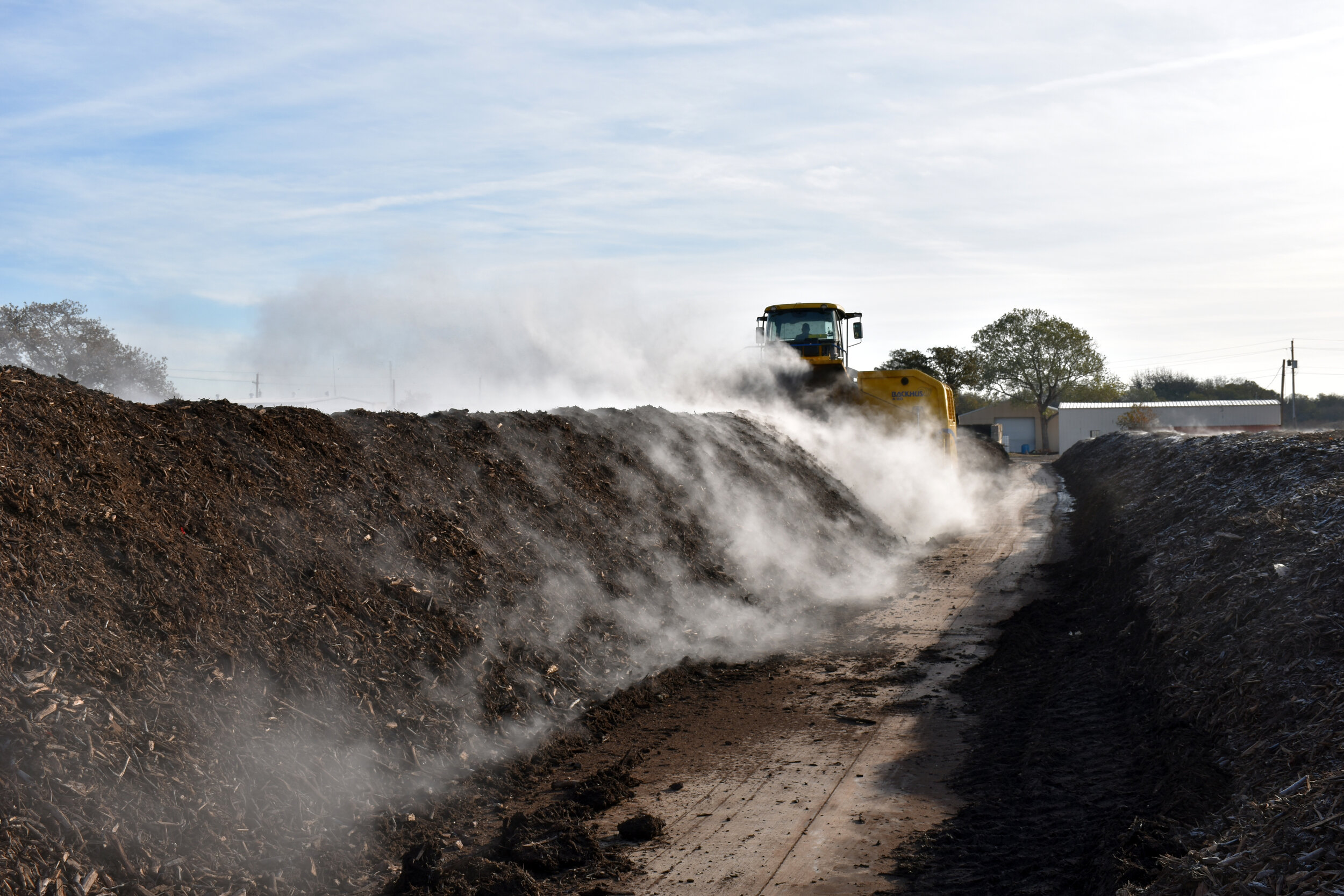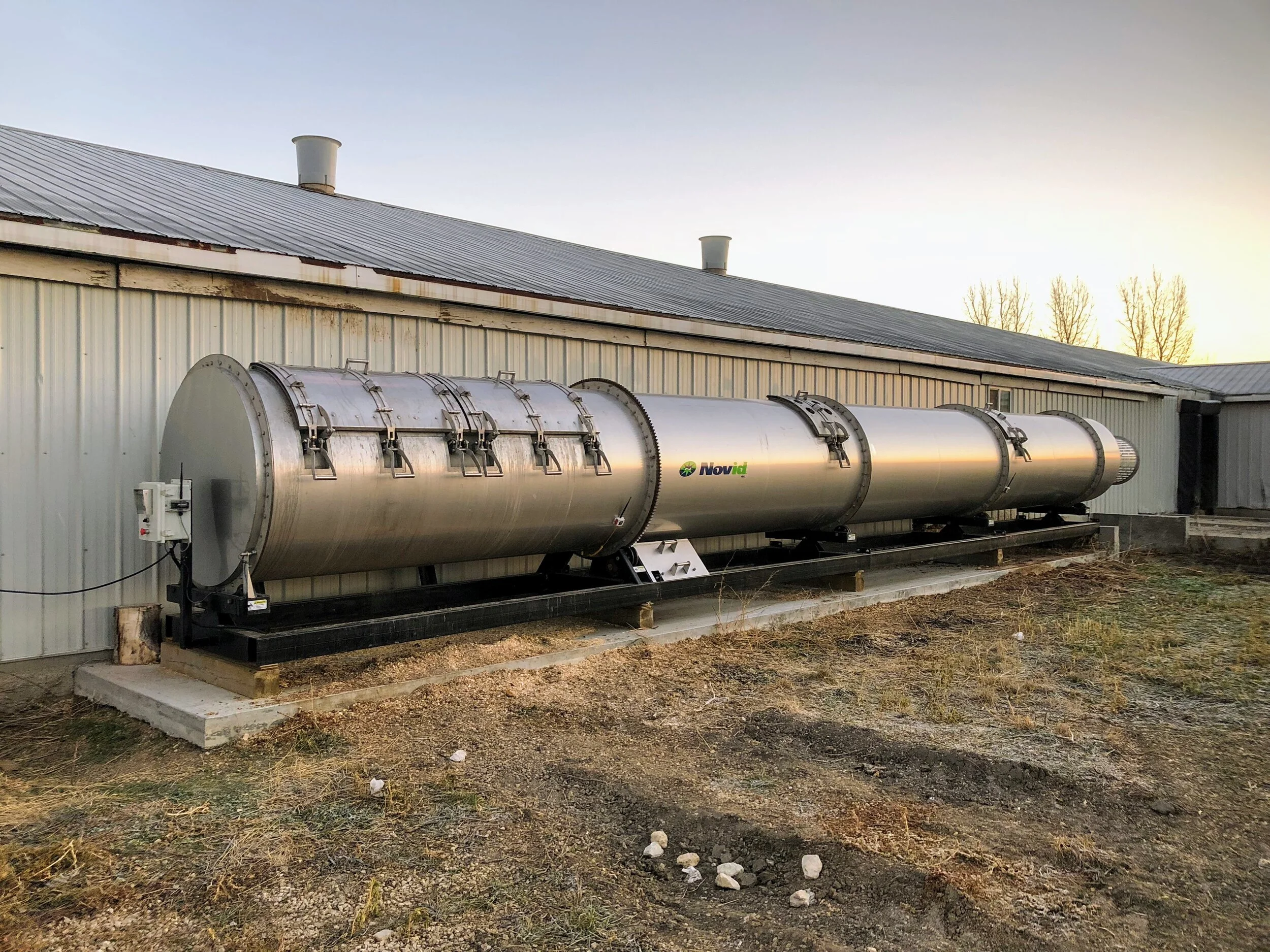
What is Compost
Photo: Compost Research and Education Foundation
How it’s Produced
Preparing Feedstocks
High carbon materials such as yard waste and certified compostable products are shredded or ground. This will create both small and large size materials to be composted. Small particles provide carbon for microbes and large material provides the air required for microbes to breathe. High carbon feedstocks are mixed by recipe with high nitrogen feedstocks to provide the ideal carbon to nitrogen ratio of 30:1. This mixture is then stacked using the different methods outlined below.
Composting Methods
Windrow
Windrow composting is a method of generating compost by piling organic waste in long rows. This is the most common method of composting in the US. There are several different ways that windrows are formed, spaced and turned. This is dependent on the site design, land use and available equipment.
Photo: US Composting Council
Aerated Static Pile
This compost generating method involves mixing organic waste in a large pile and providing air pore space in the pile by adding wood chips, shredded newspaper or other bulking agents. Aeration is provided by a blower system. Most systems have a thermocouple feedback to turn aeration on or off based on temperature. These systems can be negative (pulling air) or positive (pushing air) aeration. This method of composting can speed up the composting process and can work with large quantities of materials.
In-vessel
As its name suggests, the “in-vessel” method involves feeding organic materials into a vessel (drum, silo, concrete-lined trench) and then aerating the materials by mechanically turning them or mixing in wood chips or shredded newspaper. This method doesn’t take up as much space and it works with a variety of organic wastes. Some in-vessel systems are aerated with a blower system and the exhausted air is vented to a biofilter. Some of these smaller systems to do not produce a finished compost. Further curing is necessary.
Smaller Scale
Bins or Stacks
This method can be used in community composting programs, rural or urban farming areas. Feedstocks are mixed, stacked and monitored for temperature. This is mostly accomplished through manual labor or small powered equipment.
Photo: Institute for Local Self-Reliance | Hidden Harvest Community Farm-Baltimore
Vermicomposting
This method of composting employs the efforts of red worms to feed on food scraps, yard trimmings, and other waste to generate compost. Their waste – known as castings – can be used as potting soil and as high-quality fertilizer for gardens and houseplants.
Photo: Amy Grimes | Terra Vesco Production Facility





